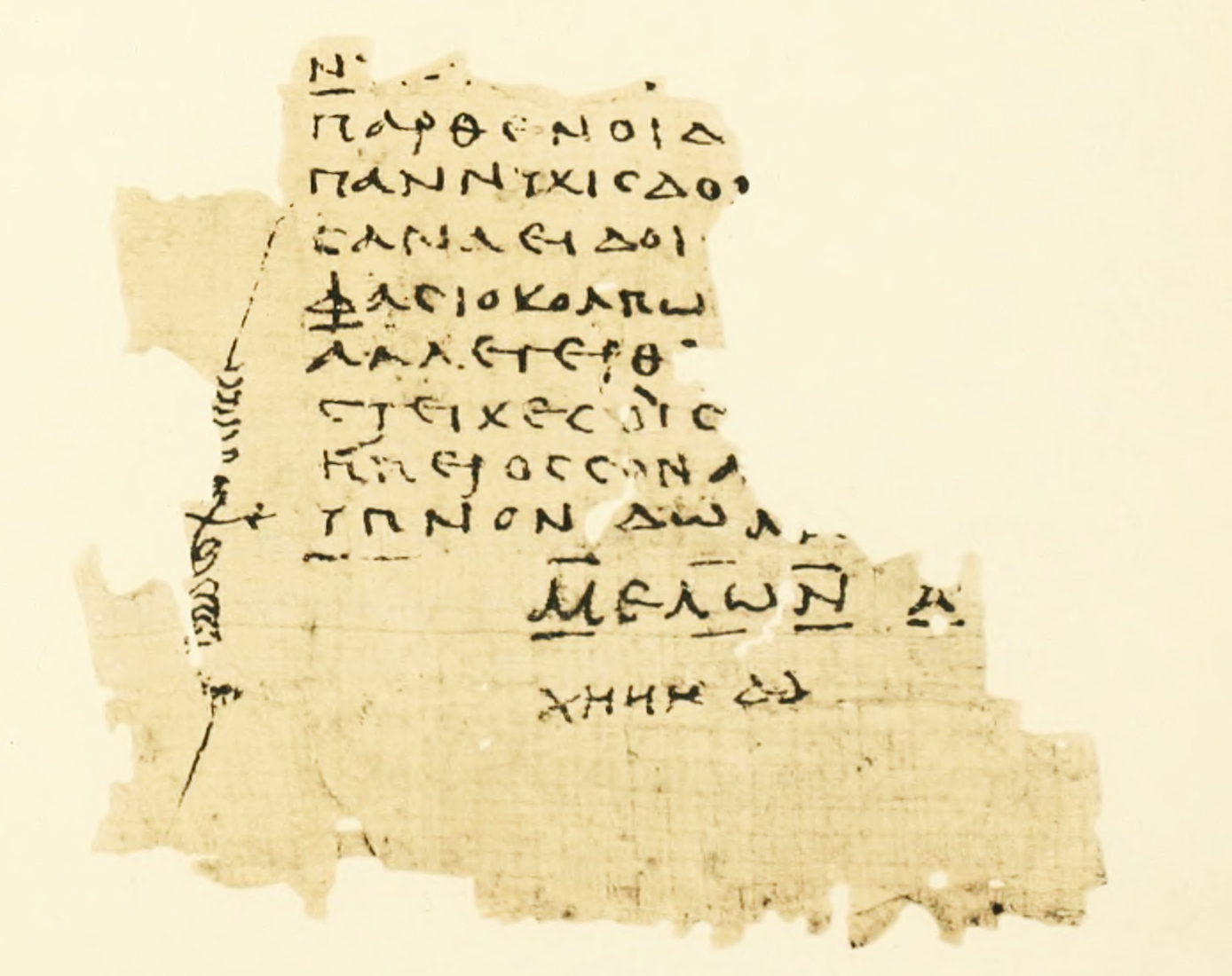Papyrus Oxyrhynchus 1231 on:
[Wikipedia]
[Google]
[Amazon]
 Papyrus Oxyrhynchus 1231 (P. Oxy. 1231 or P. Oxy. X 1231) is a papyrus discovered at Oxyrhynchus in Egypt, first published in 1914 by Bernard Pyne Grenfell and Arthur Surridge Hunt. The papyrus preserves fragments of the second half of Book I of a
Papyrus Oxyrhynchus 1231 (P. Oxy. 1231 or P. Oxy. X 1231) is a papyrus discovered at Oxyrhynchus in Egypt, first published in 1914 by Bernard Pyne Grenfell and Arthur Surridge Hunt. The papyrus preserves fragments of the second half of Book I of a
 Papyrus Oxyrhynchus 1231 (P. Oxy. 1231 or P. Oxy. X 1231) is a papyrus discovered at Oxyrhynchus in Egypt, first published in 1914 by Bernard Pyne Grenfell and Arthur Surridge Hunt. The papyrus preserves fragments of the second half of Book I of a
Papyrus Oxyrhynchus 1231 (P. Oxy. 1231 or P. Oxy. X 1231) is a papyrus discovered at Oxyrhynchus in Egypt, first published in 1914 by Bernard Pyne Grenfell and Arthur Surridge Hunt. The papyrus preserves fragments of the second half of Book I of a Hellenistic
In Classical antiquity, the Hellenistic period covers the time in Mediterranean history after Classical Greece, between the death of Alexander the Great in 323 BC and the emergence of the Roman Empire, as signified by the Battle of Actium in ...
edition of the poetry of the archaic poet Sappho.
The papyrus comes from a second century AD roll, and is made up of 56 smaller fragments. The largest piece, fragment one, measures 17.7 cm × 13.2 cm; it covers two columns and includes fragments of four poems. It is written in a small informal upright hand, and corrections and marginalia have been added in a second hand, using a different ink.
The papyrus preserves a number of fragments by Sappho. Fragment one of the papyrus preserves four consecutive fragments; frr. 15, 16, 17, and 18 in Voigt's edition. Also preserved, on fragment 56 of the papyrus, is the final poem of Book I of Sappho, fragment 30. A colophon at the end of fragment 56 of the papyrus shows that Sappho's Book I contained 1320 lines, or 330 stanzas. Sappho's name is not preserved here; instead, the authorship of the fragments is established by the metre (Sapphic stanza
The Sapphic stanza, named after Sappho, is an Aeolic verse form of four lines. Originally composed in quantitative verse and unrhymed, since the Middle Ages imitations of the form typically feature rhyme and accentual prosody. It is "the longes ...
s), dialect (Aeolic
In linguistics, Aeolic Greek (), also known as Aeolian (), Lesbian or Lesbic dialect, is the set of dialects of Ancient Greek spoken mainly in Boeotia; in Thessaly; in the Aegean island of Lesbos; and in the Greek colonies of Aeolis in Anato ...
), and three overlaps with previously-known fragments attributed to Sappho.
The papyrus is now in the collection of the Bodleian Library.
See also
*Oxyrhynchus papyri
The Oxyrhynchus Papyri are a group of manuscripts discovered during the late nineteenth and early twentieth centuries by papyrologists Bernard Pyne Grenfell and Arthur Surridge Hunt at an ancient rubbish dump near Oxyrhynchus in Egypt (, mo ...
* Papyrus Oxyrhynchus 7
Notes
References
Works cited
* * * * * 2nd-century manuscripts Bodleian Library collection Greek-language papyri Oxyrhynchus papyri vol. X Works by Sappho {{OxyrhynchusGR-stub